Are you about to set up a retail store or thinking of revamping your store? This blog is exclusively for you, where we will converse about retail store design ideas and how to design a retail shop. Before that, the first thing you have to tell your mind is that there are no correct or incorrect ways to set up a retail store.
How to design a retail shop?
What are the things you have to ensure while designing a retail store?
This blog would be an answer to many more queries of yours along with the best retail store design ideas.
Let’s kick start with retail store designs and store planning.
How do you design a retail store?
As discussed above, there is no thumb rule when you design a retail space. All you have to keep in mind is your customers, their shopping comfort, your products, and their display. The moment you consider these aspects, a good retail store design would follow you.
Retail store design and visual merchandising are vital factors that come to play when you want to give the best to both your products and the customers. Many retail stores with quality products but poor traffic point out the importance of store layout in retail designing.
Instead of letting customers fend for themselves in the aisles, smart retail store design ideas take care of customer interaction and guide customers across the store.
Strategies for Store Planning
The intentional use of space to affect the consumer experience is what makes up a retail store layout, whether it be physical or digital. Store design objectives in retailing should be to create value and enhance customer experience.
The goals of retail shop design are to establish a brand or particular appeal with creative retail store design, window displays, furnishings, lighting, flooring, music, and store layout. What are the factors a business should consider while planning a retail store? Check them out.
- Geographic location
- Space
- Types of product/ service
- Business objective]
- Brand theme
- Target customers
- Expected traffic flow
What are the main types of store layouts?
Planning a store layout that effectively distributes consumer traffic prevents your merchandise from seeming cluttered. A fundamental comprehension of the retail store layout possibilities available to you is necessary for both creating a brand-new retail store design and updating an existing shop layout.
A fundamental comprehension of the retail store layout possibilities available to you is necessary for both creating a brand-new retail store design and updating an existing shop layout.
Choosing a store’s layout might be challenging because it has a direct impact on your sales. Seeking the assistance of an expert retail design agency can help you come out with the best retail shop layout ideas for your retail designer stores.
The following are the different types of store design layouts.
Straight Store Layout
The straight retail layout is effective, easy to plan, and able to provide customers with private spaces. The layout design efficiently uses the available space and makes the best use of the surrounding walls.
Signage and merchandise displays are utilised in straight floor layouts to keep people interested and moving around. This type of floor layout is commonly incorporated in clothing store design ideas, grocery store design ideas, and other smaller retail spaces.
Grid Store Layout
Retailers set out their merchandise in tightly packed aisles in a grid structure for clients to browse at their leisure. The grid arrangement has extensive product and merchandise displays along long, predictable aisles.
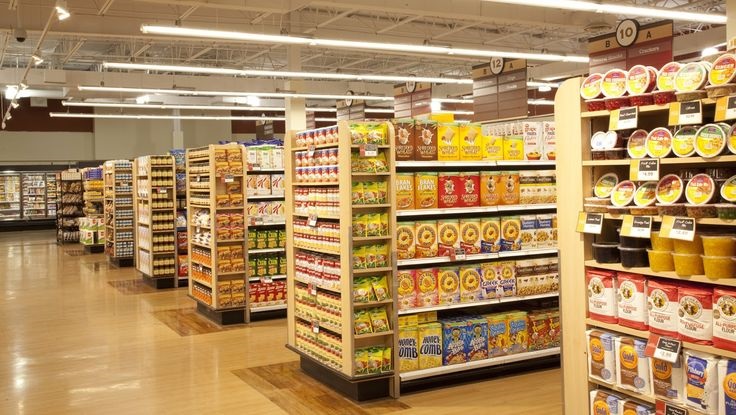
Grid layout maximises product presentation, reduces vacant space, and is typically the most popular choice among buyers. Grid layouts are perfect for ensuring a predictable traffic flow while storing large amounts of inventory.
Geometric Store Layout
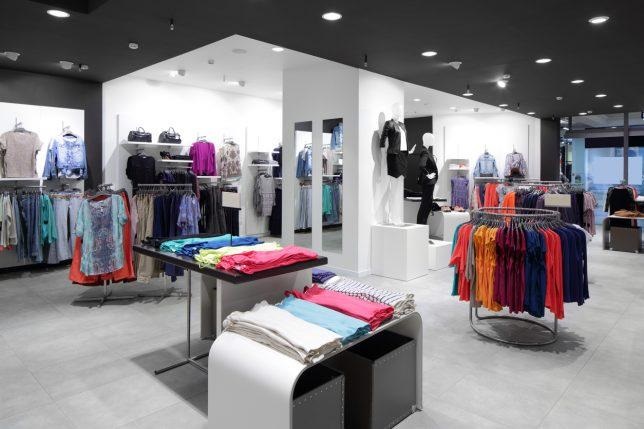
Geometric designs are perfect for stores that want to look minimalist or sell unique things from a small selection. This design mixes displays of various sizes to showcase specific products. In such a floor plan, the racks and fixtures are given a geometric shape. The store has a trendy and distinctive appearance thanks to the geometric floor plan.
Loop Store Layout
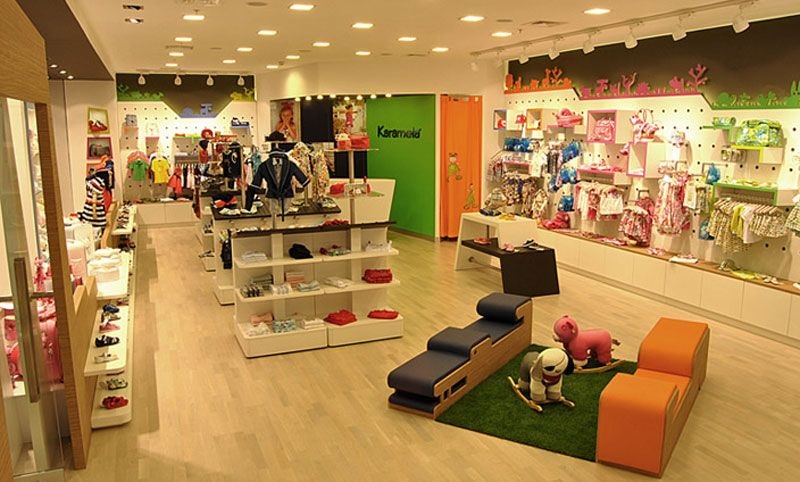
Loop store layout is also called racetrack layout, where every visitor is compelled to walk the entire length of the establishment because of the way it is built. Intentionally closing the loop creates a circuit. The layout makes sure that customers can access all of a store’s inventory because it predetermines their path. You arrange your furnishings and stock so that it forms a route that leads customers through your store.
Forced Path Store Layout
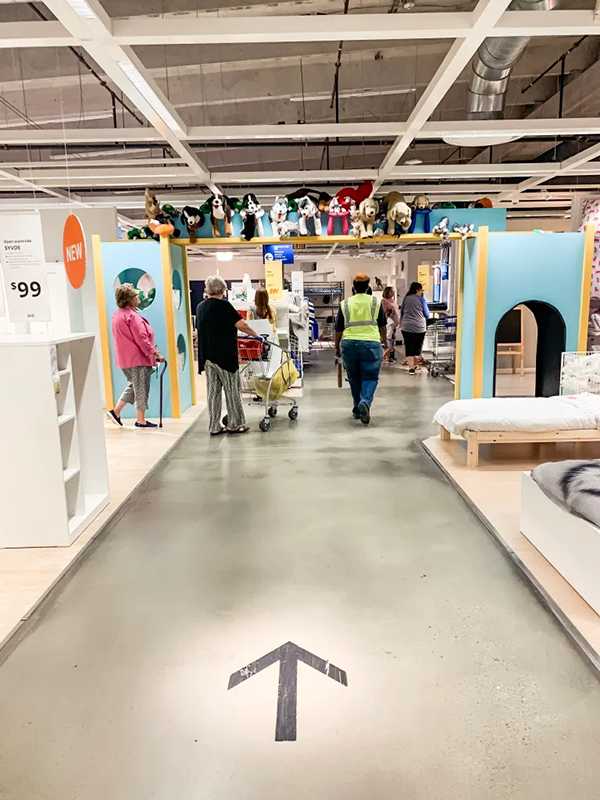
Customers are forced to follow a predetermined path through a store via the forced-path architecture. Before the customer leaves the business, as many things and items as possible are to be displayed to them. Customers are exposed to all of the merchandise by being led along a predetermined course through the store, which may persuade them to buy something they hadn’t intended to.
Angular Store Layout
The angular layout is effective for stores that want to have no particular fit for their store but instead want to have an unpredictable and interesting appearance with additions of geometric and free-flow arrangements.
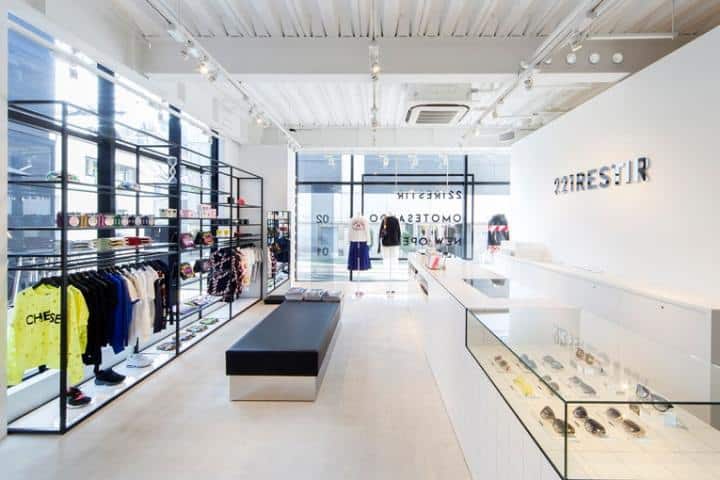
The angular store layout is usually preferred by luxury retailers and ideal for showcasing expensive products utilising free-standing product displays.
Diagonal Store Layout
Shelves and display cases are arranged diagonally throughout the diagonal floor design. In addition to improving movement and flow, this makes the area more welcoming and user-friendly.
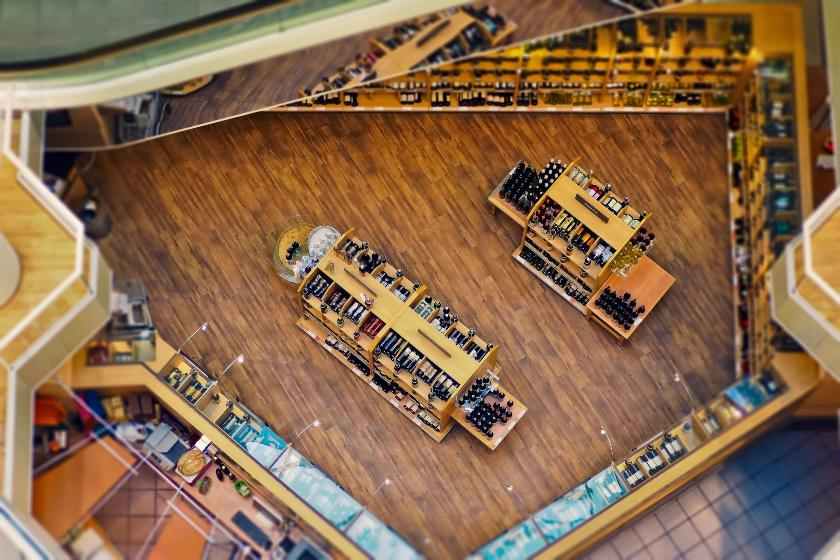
Small retail stores that want to clear sightlines and design a more distinctive environment may benefit greatly from this type of layout. It’s even better for promoting greater circulation among the customers and more activity throughout the business.
What is the best layout for a retail store?
A store may profit more from some layouts than others, depending on elements like the size of the store and the types of things you sell. The best layout would be anything that makes it simple for the customers to grasp your products and have hassle-free movement inside the retail store.
The performance of the store in terms of in foot traffic and sales can be affected by designing the layout without considering the customer flow and behaviour patterns. Any type of store layout should best meet the store’s sales objectives and brand message.
You can determine whether the store design is making you money or costing you sales by examining which parts of the store are working well and which require improvement.
Top Twenty Retail Store Design Ideas from AD Vantage
How can I make my retail store attractive? AD Vantage answers your query with the top twenty retail store designing tips.
- Go with a perfect floor plan that would gift your customers a soothing shopping experience.
- Utilise every inch of the retail space to entice the customers and speak about your product.
- Bring your products to the limelight with the help of eye-catching and comfortable shelving and product display ideas.
- Use soothing colour tones throughout the interior and exterior of the retail space. Come up with a colour palette for your store that would keep you noted.
- Ensure that you allot a dedicated space to accommodate the daily tasks needed for the maintenance of your products.
- Reflect your brand theme, message and brand value throughout the retail store design.
- Warm lights and attractive showpieces can bring an aesthetic look to your retail space. Spotlights, uplighting, and contrast lighting could be added attractions.
- Install stunning window displays and outdoor signages that would invite the customers inside the store.
- Incorporate creative signages that reflect the business objective.
- Install digital signs, LCDs, and LED screens to highlight your brand.
- Carefully pick the fixtures and furniture for your retail store so that does not distract the customers from your products.
- Make use of QR codes inside the retail space so that the so customers can access product information, and switch to your e-commerce platform.
- Depending on your business, unique mannequins can be used to display your latest collection.
- Flooring material and colour should fine-tune with the total ambiance and should be well-maintained.
- Use your products as décor, so that it will grab the attention of the customers and trigger them to explore your products.
- Dedicate a decompression zone, where the customers can stand back and look around before they move ahead inside the store.
- Don’t forget to bring in good music, mind grabbing aromas to capture people’s attention.
- Add comfortable seating arrangements that would refresh the customers and have a comfortable stay inside the retail store.
- You can keep up with the seasons and bring stunning interior decorations and elements inside the store.
- Position the focal point of your display at eye level, then use strategically placed objects and lighting to draw attention to it.
To conclude, a successful retail store depends on more than just the cost and range of the product it sells. While they are important for attracting people to your store, the creative retail store design is required to persuade them to buy. You must come with a space design that exhibits things in an inviting and presentable manner, while also displaying them conveniently.
Many retailers underestimate the significance of the types of store design, and layout and the potential effects it may have on customer behaviour and purchasing trends. Are you one among them? Connect with AD Vantage and grab retail store design ideas that would make your store stand out of the herd.

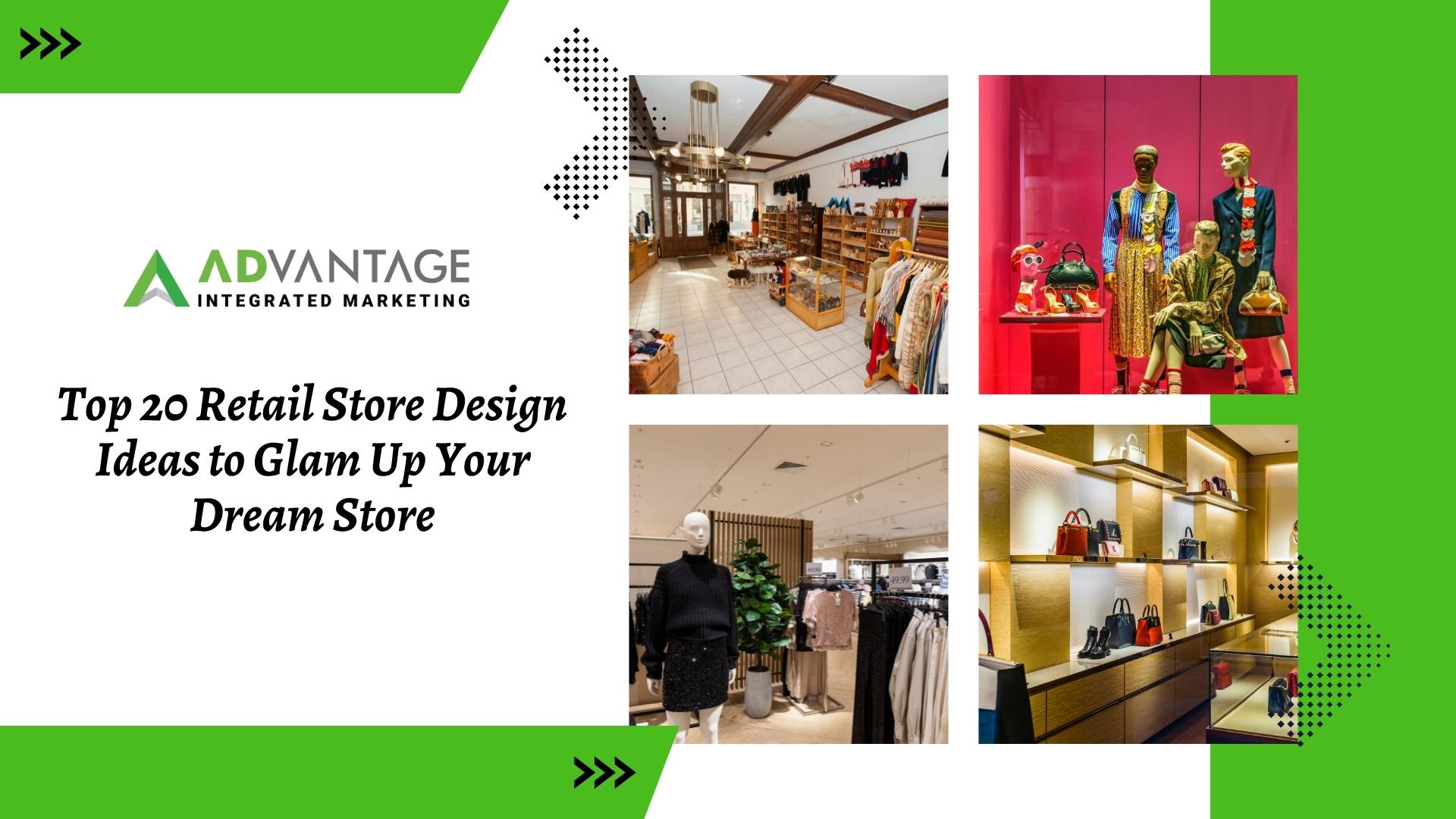

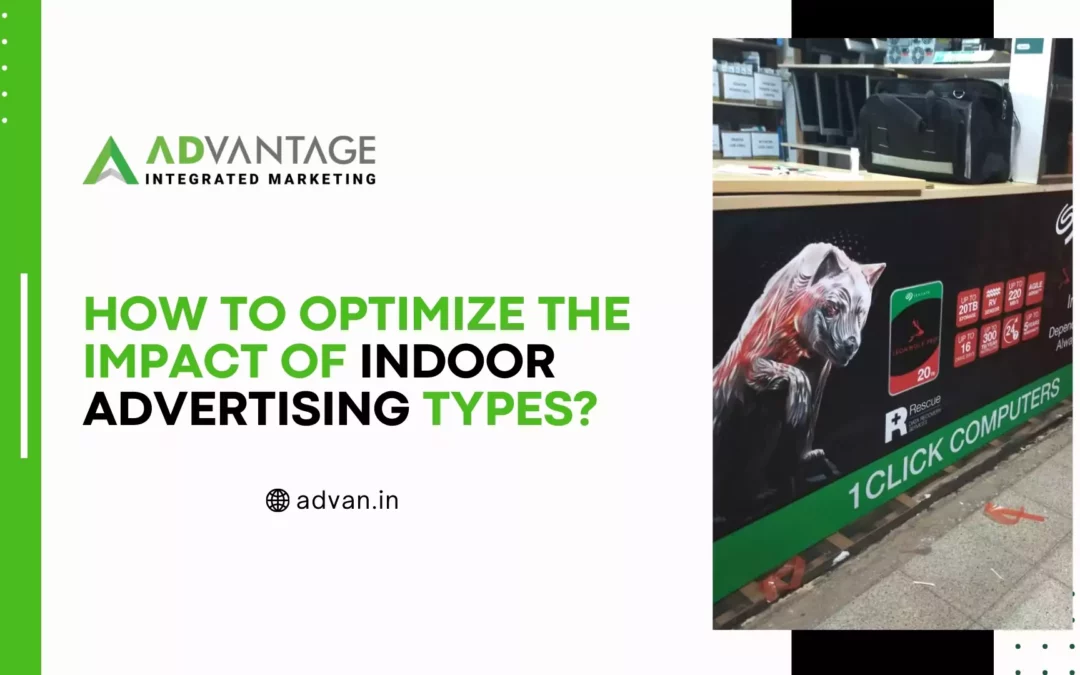



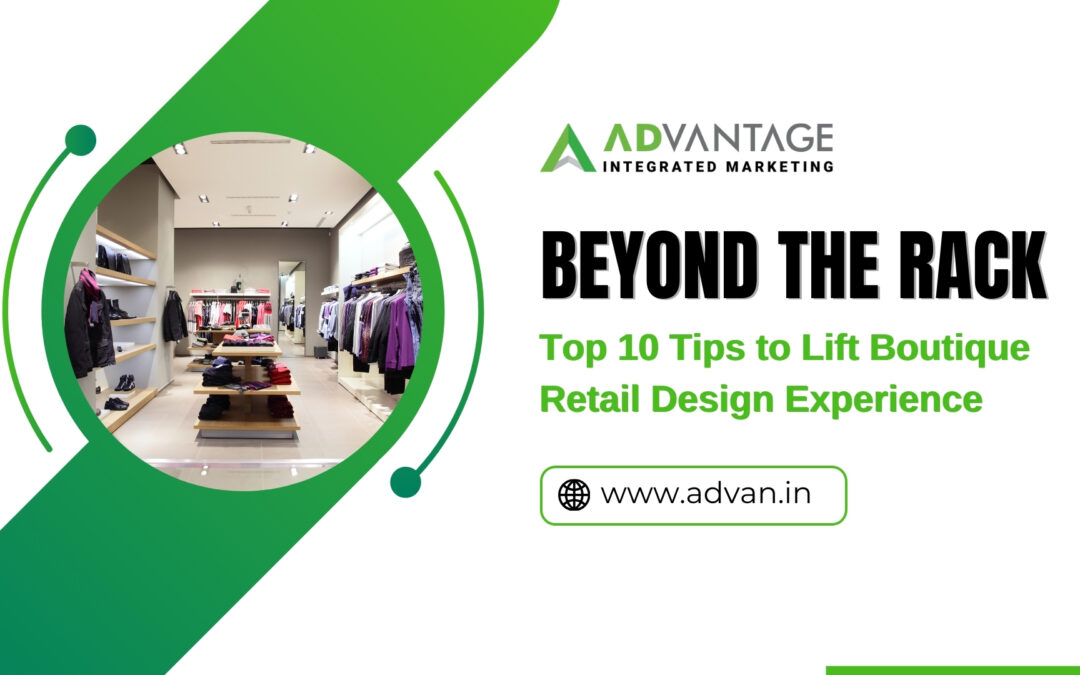
0 Comments